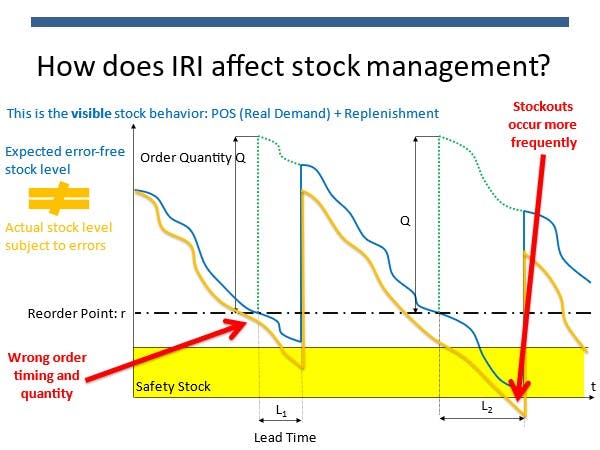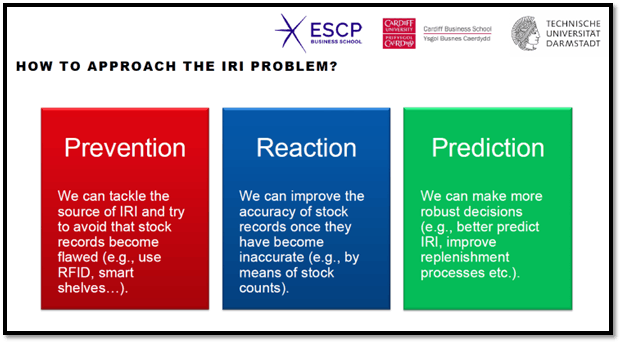Inventory Accuracy
This Working Group is focused on the increasingly important issue of inventory accuracy across retailing – from store shelves to E-commerce fulfilment centres.
Previous research has shown the negative impact poor inventory accuracy can have on the customer experience, not least through stock being unavailable.
This has become increasingly important as retailers have moved to Omni-channel operations, which add greater complexity and demand to inventory management systems.
This Working Group is providing its members with a forum to share best practices, initiate new research and raise awareness of the growing importance of inventory accuracy in driving retail profitability.
Research papers
Our research papers offer groundbreaking insights and actionable outcomes to help retailers and their partners better manage the many ways in which profits can be negatively impacted by all forms of retail loss. Produced by some of the leading academic experts in the field of retailing and loss prevention, they are all free to download.
Our Meetings
ECR Retail Loss Group regular working group meetings provide an opportunity to network with industry peers, hear updates on the latest research and sector initiatives, and development new skills and insights. All retailers, CPGs and academics can participate at no cost.
Blog Inventory Accuracy
Podcast Inventory Accuracy
FAQs Inventory Accuracy
Typically, for audit, financial and compliance reasons, the entire inventory located in physical stores and distribution centres should be "counted" once a year to ensure that the book stock records match / are adjusted to reflected the actual quantity in these locations..
Retailers can either choose to complete this undertaking using their own internal team, either a specialist audit team or the store or DC team themselves. Alternatively, they can use a third party such as RGIS, who will undertake the audits on their behalf and to their brief.
A hybrid approach is also available where stores will be supervised by / borrow the equipment of a third party specialist.
Specifically, inventory record accuracy considers whether the physical quantity found of a sku matches exactly the quantity recorded on the system at any point in time. For example, if the system record suggests that there are twelve cases of a sku, for example Gillette MACH3 4 count, but the auditors only find five cases, or they find thirteen cases, in both examples, the record is deemed to be inaccurate.
Complexity is added when the measure is viewed through the lens of value Vs item integrity. Here, retailers can be more interested in the net negative value of the variance, often called out as unknown loss or shrink.
Further ambiguity is added when interpretations are made on how to measure the variance, with organisations adapting metrics that define accuracy as a percentage found within a zone of +/- 2 units, or a monetary value.
The ECR Retail Loss Group believes that inventory record integrity, either the system and the physical inventory match exactly or they don't.
The ECR Retail Loss Group chooses to define Inventory record accuracy as the percentage of inventory records in any given location where the physical quantity exactly matches the quantity stated in the inventory system, or as some call it, the perpetual inventory record. Retailers acquire this data through an audit of the inventory where either the retailers staff or a third party conduct a physical count of the inventory they find in the store. Using this method, the retailers would count the number of inventory records with a variance, and compare them to the total number of inventory records in that location. In the ECR research, only 40% of inventory records were found to have an exact match.
Shrink or unknown loss is a number that can also be derived from the same audit data. Shrink or unknown loss is the variance between the total value of the inventory expected to be in the location and the actual quantity found at the count. The value of this variance, typically a negative, is then expressed as a percentage of total retail sales for the period between the time of the previous audit and this audit. Typically this variance is valued at between 1-3% of sales valued at retail.
So the differences are:
- Shrink or unknown loss is typically viewed as a financial value while inventory record accuracy is looking at unit integrity
- Shrink or unknown loss is mostly viewed relative to sales while inventory records are looked at relative to number of records
What they share are the reasons that explain the variances, wrong deliveries, pick errors, loss and theft in transit, receiving mistakes at the store, misplacement in the back room, damage and spoilages not recorded, wrong counting, theft from staff, third party vendors and non paying customers, errors at EPOS, errors with returns and wrong transfers. There are more reasons but broadly, the causes are the same.
Main office
ECR Community a.s.b.l
Upcoming Meetings
Join Our Mailing List
Subscribe© 2023 ECR Retails Loss. All Rights Reserved|Privacy Policy







